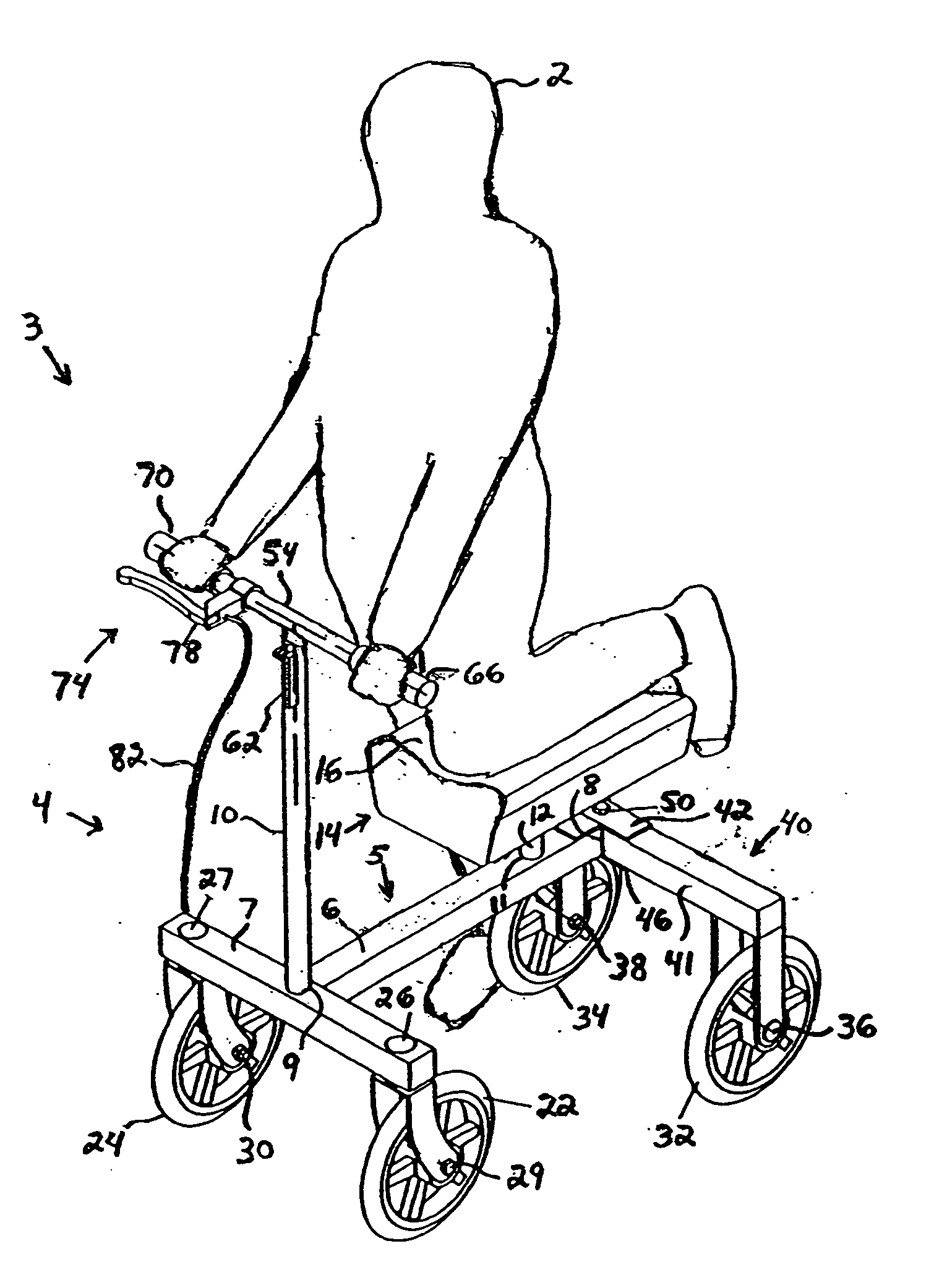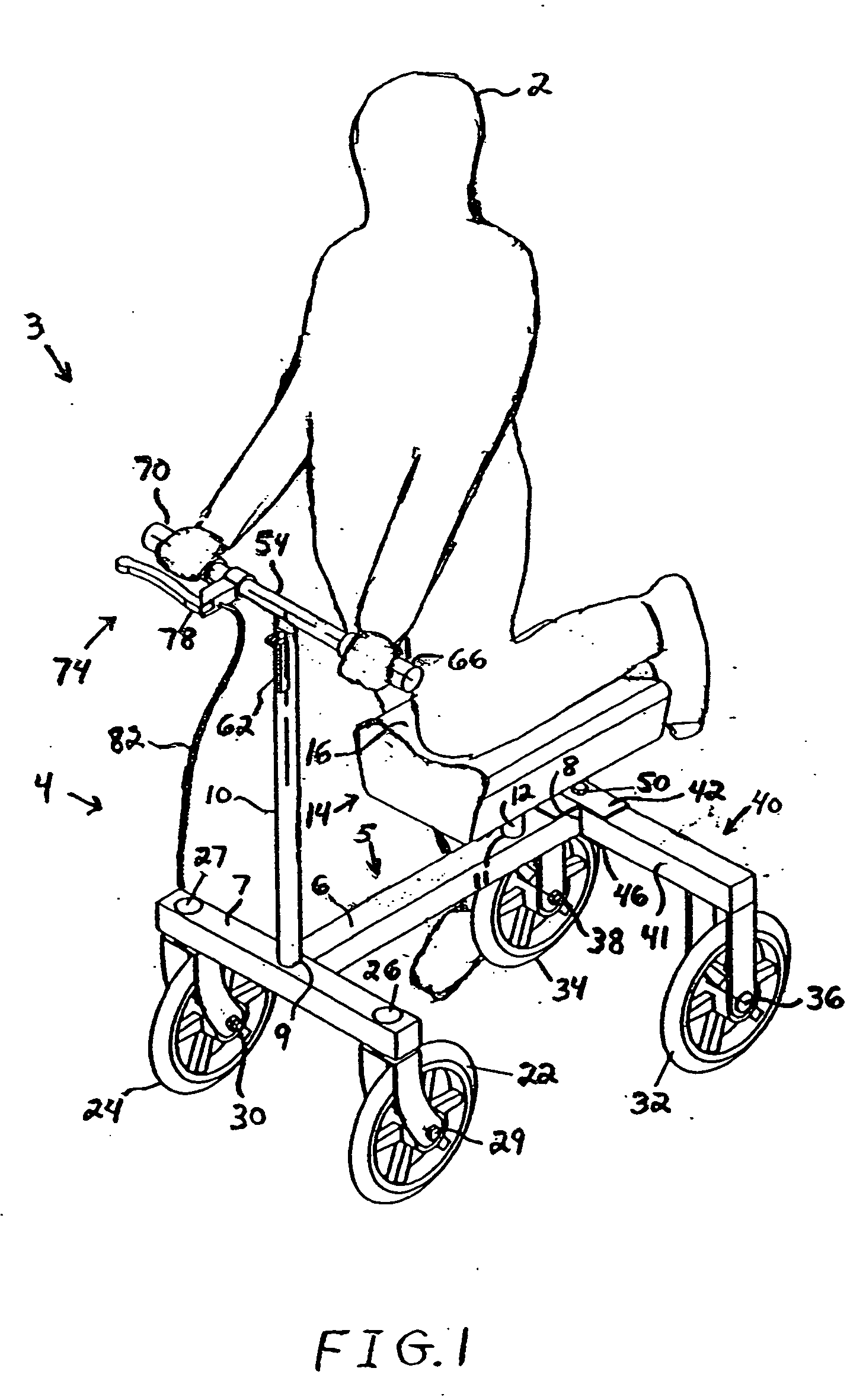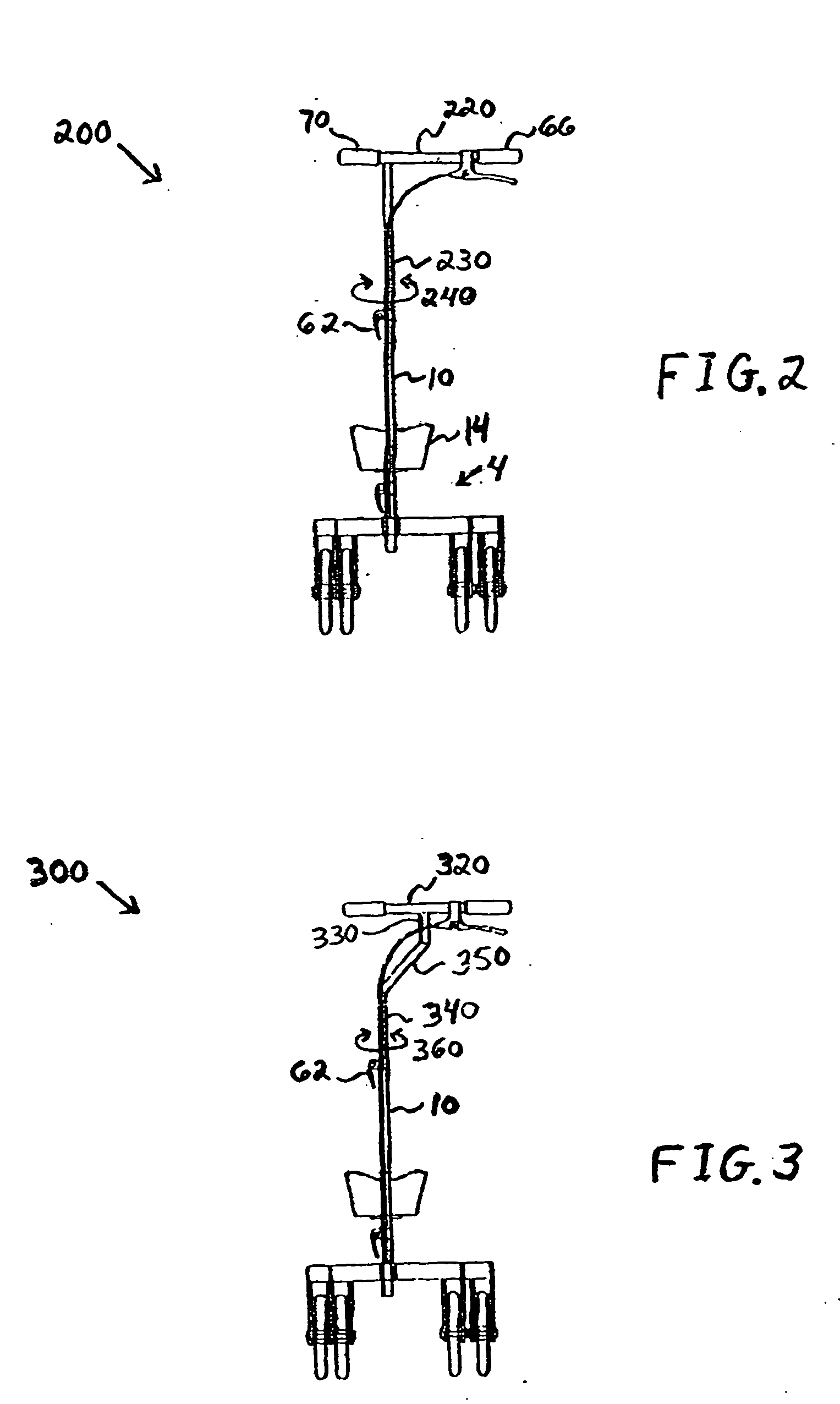Cart for injured person
a technology for injured people and cars, applied in the field of cars for injured people, can solve the problems of inability to move, inconvenient use, and inability to move freely,
- Summary
- Abstract
- Description
- Claims
- Application Information
AI Technical Summary
Benefits of technology
Problems solved by technology
Method used
Image
Examples
Embodiment Construction
[0019]FIG. 1 is a perspective view of a person 2 operating a cart 3 according to the present invention. Cart 3 includes a frame 4, a leg support 14, a left front wheel 22, a right front wheel 24, a left vertical axle 26, a right vertical axle 27, a left horizontal axle 29, a right horizontal axle 30, a first rear wheel 32, a second rear wheel 34, a left horizontal axle 36, a right horizontal axle 38, a coupling bar 40, an upper coupling flange 42, a lower coupling flange 46, a bolt 50, a handlebar 54, a handgrip 66, a handgrip 70, a handbrake 74.
[0020] As shown in FIG. 1, frame 4 provides general support to the cart similar to the support typically provided by a bicycle or tricycle frame. Accordingly, frame 4 may be manufactured from the same materials and with the same type of equipment used in the production of similar devices such as scooters, tricycles, wheelchairs, shopping carts, walkers, etc. In the exemplary embodiment described herein, frame 4 is made from sections of stee...
PUM
 Login to View More
Login to View More Abstract
Description
Claims
Application Information
 Login to View More
Login to View More - R&D
- Intellectual Property
- Life Sciences
- Materials
- Tech Scout
- Unparalleled Data Quality
- Higher Quality Content
- 60% Fewer Hallucinations
Browse by: Latest US Patents, China's latest patents, Technical Efficacy Thesaurus, Application Domain, Technology Topic, Popular Technical Reports.
© 2025 PatSnap. All rights reserved.Legal|Privacy policy|Modern Slavery Act Transparency Statement|Sitemap|About US| Contact US: help@patsnap.com



